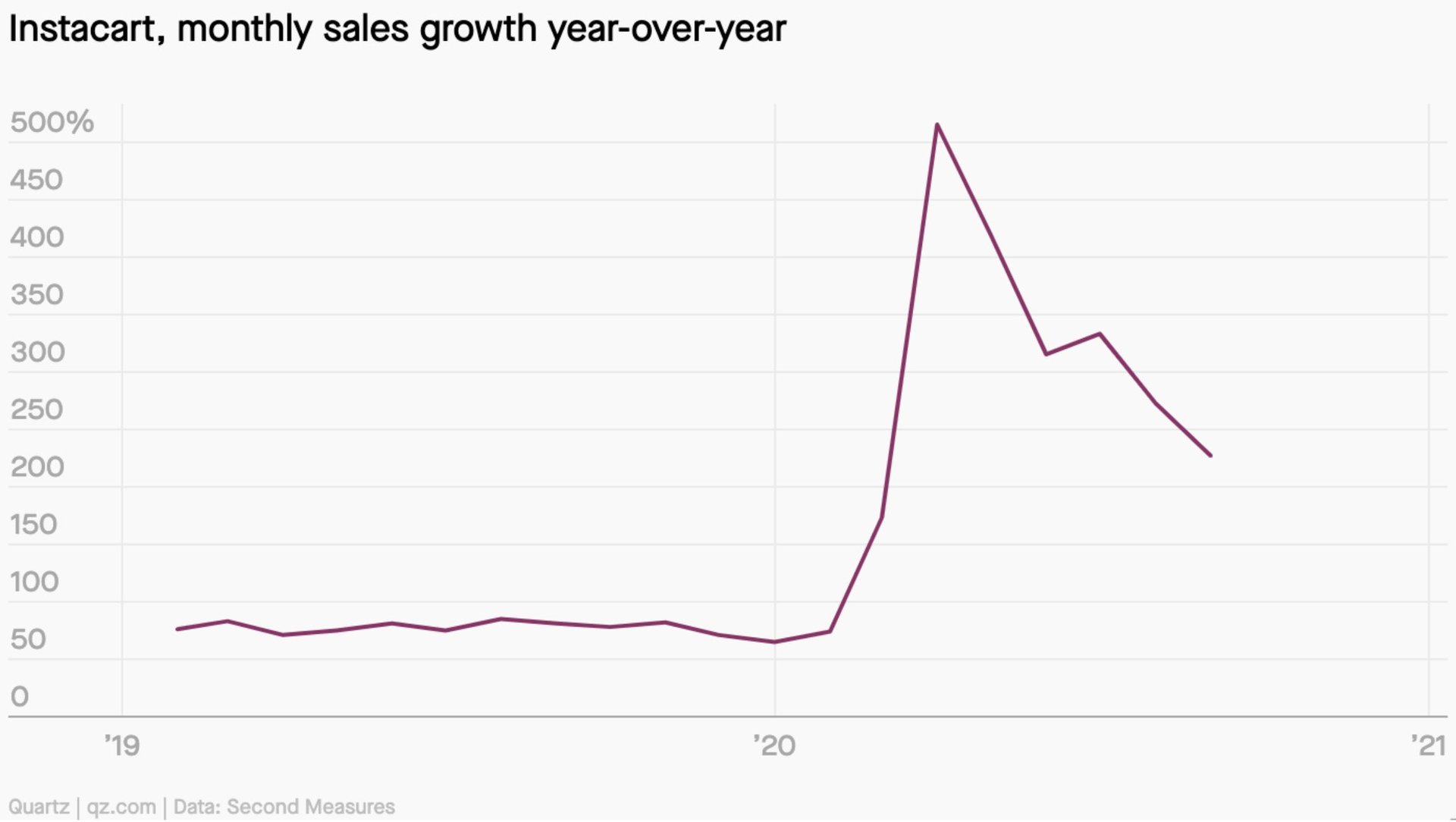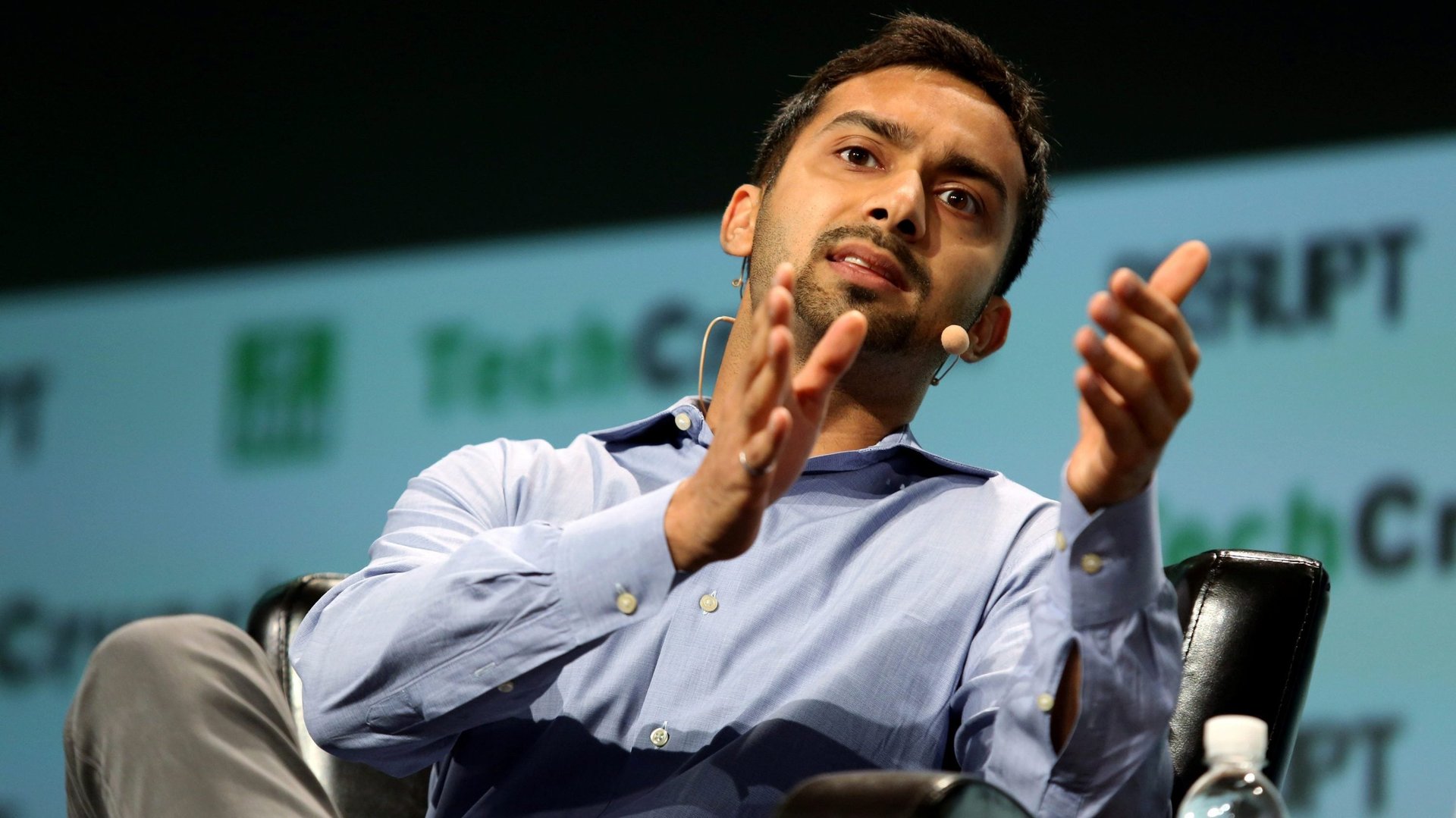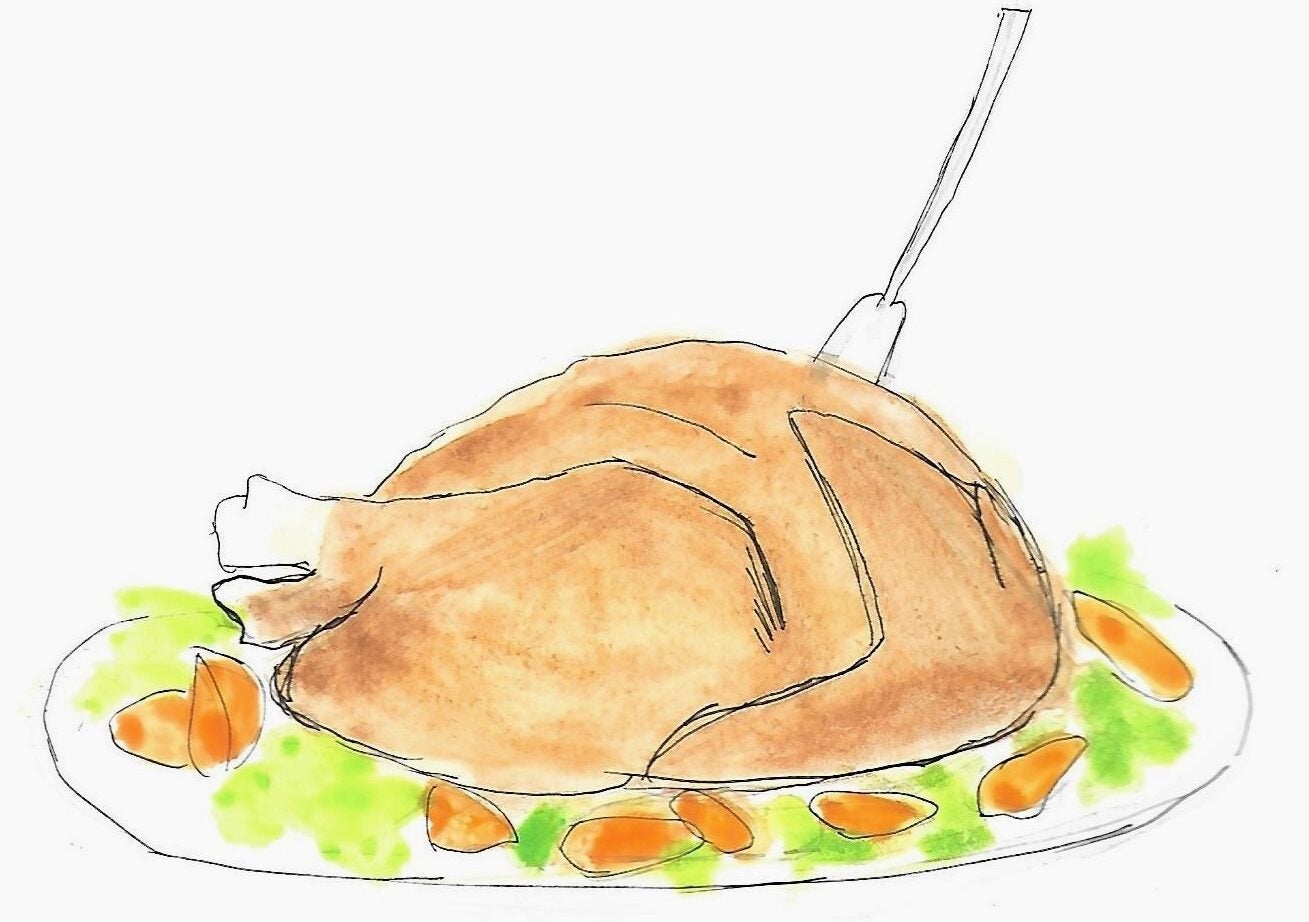For Quartz members—Thanksgiving? There’s an app for that
Hi [%first_name | Quartz member%],


Hi [%first_name | Quartz member%],
Costco turkey: $19.85. Mashed potatoes: $3.99. Cranberry sauce: $2.69. Delivery window: whenever you want. Tip: hopefully generous! Getting an entire Thanksgiving dinner delivered to your doorstep is no longer a tall order (though taxes and “heavy fees” may apply). And with the pandemic spurring online shopping for everything from turkey to toilet paper, Instacart is poised for a major moment.
But first, a recap: The US oil industry is flailing (despite a $10 billion pandemic lifeline), Huawei isn’t giving up on the UK, and Trump is junking a treaty—and two planes—designed to stop nuclear war. Indian IT firms are ramping up hiring, Hollywood has a new marketing technique, and nobody’s buying belts these days. Who will win the Covid-19 vaccine race? Here’s the metric we’re watching.
Your most-read story this week: The state-by-state odds of spreading Covid-19 at your Thanksgiving gathering. And most relatable member goes to whoever’s reading Let us finally resolve the octopuses vs. octopi debate. It’s good to be prepared for dinner-table argument.
Okay, now check the pantry—did you get enough wine? Because we’re going grocery shopping.
Attention Instacart shoppers
If you’ve been inside a grocery store recently, you may have noticed a number of shoppers pushing around jam-packed carts while scrolling furiously through their phones. …Okay that sounds like most of us, but the ones in green T-shirts are most likely Instacart shoppers, and they’re handpicking groceries for users of the popular eight-year-old app.
San Francisco-based Instacart—valued at $17.8 billion, according to PitchBook—partners with over 500 retailers including Walmart, 7-Eleven, and Sephora, and delivers from 8,000 store locations across the US and Canada. It’s a saturated space: Gig companies like DoorDash and Uber are also getting into groceries, as are big retailers like Amazon, Walmart, and Target. But it’s also a huge opportunity, as Covid-19 drives record levels of demand.
In March, online shopping accounted for almost 7% of all US grocery sales, up from 5% at the end of 2019, according to a Bain report. In the UK, online sales hit 12%, compared with 8% pre-Covid. In France, online sales jumped to 10% from 6%, and in Italy they doubled to 4%. Analysts are expecting at least some portion of that surge to stick around: By 2025, online grocery is expected to hit 22%—or $250 billion—of total US grocery sales.
For Instacart, the shift has already been significant. After reportedly losing $300 million last year, the company turned a profit for the first time in April. In October, a report from investment bank Cowen found that Instacart is the third most popular online US grocery destination, after Walmart and Amazon. It’s expected to go public as early as 2021 (at a possible valuation of $30 billion).

To contend with demand, Instacart has hired hundreds of thousands of contractors to help it fill orders. It’s also vying for a diverse customer base, making delivery service available to shoppers on food stamps and launching a phone service to add 60,000 seniors to its platform.
But that expansion is also exacerbating tensions around worker compensation, workplace protections, and lack of hazard pay. Now Instacart must keep up with short-term demand while laying the groundwork for the online-grocery long game.
2%: The average grocery store’s profit margin.
$225 million: Instacart’s latest funding round.
750,000: Active Instacart shoppers.
$35 billion: Grocery sales Instacart says it’s on track to process this year.
85%: US households that can get grocery orders filled through Instacart.
$155: How much the average customer spent on Instacart the week of Sept. 21, according to research firm Second Measures, up 20% year-over-year.
39%: Share of millennial respondents to a 2019 Instacart/Harris poll who said they would rather give up their phones for a month than be responsible for cooking a Thanksgiving dinner.
Remember when
If Instacart ever needs a cautionary tale about growing too quickly, it can refer to Webvan, considered one of the most notorious dot-com flops. The online grocery startup filed for bankruptcy in 2001 after burning through $800 billion in just three years, and became a poster child for the perils of too-quick expansion, too-little management expertise, and too much money spent building out a proprietary infrastructure.
Origin story
You’ve heard this one before: In 2010, Amazon logistics engineer Apoorva Mehta felt unfulfilled by his day job. So he quit and moved to San Francisco to start his own company.
After considering 20 different ideas–including a social network for lawyers—Mehta zeroed in on the pain points of grocery shopping. In the spring of 2012, the first prototype of Instacart was born: Mehta placed his first order, picked up his own items, and delivered them to himself. He later landed an investment from Y Combinator after using the app to send a partner there a six-pack of beer.
Since those early days—when Mehta would Uber orders around SF himself—Instacart has expanded to 5,500 cities across the US and Canada, and has raised $2.4 billion in funding from investors that include Andreessen Horowitz, Sequoia Capital, and Kleiner Perkins.

The gig is up
From tipping policies to worker classification, Instacart has long faced labor backlash. In 2015, following lawsuits from independent contractors who said they were being treated like employees, the company gave in-store shoppers the option of becoming part-time employees with limited benefits. In 2018, Instacart hosted a “Shopper Experience Council” at its San Francisco headquarters, where Mehta said that it has “real debt with its shoppers.”
But labor tensions continued to stew: In 2019, Instacart workers alleged the company offset wages with tips from customers. And during the pandemic, which has given added exposure to how employers treat different classes of workers, Instacart shoppers have pushed for better pay and protections.
Then came Proposition 22. Earlier this month, California voters approved a ballot initiative that essentially exempts gig companies like Uber, Lyft, DoorDash, and Instacart from needing to classify their workers as employees, a distinction that would require them to pay into benefits like workers’ compensation and health insurance. The companies together spent over $200 million pushing Prop 22—it was the most expensive ballot initiative in California history—and are now laying the groundwork for similar initiatives in other states.
What’s in your cart?
Perhaps the best window into the strange world of Instacart is r/InstacartShoppers, a Reddit thread where shoppers share tips, ask questions, and talk shop about gig gigs. Highlights include:
💰 Theories on the tipping habits of different generations.
🛒 Intel on what kinds of orders no Instacart shopper will accept.
Keep reading:
- Covid-19 is reawakening the US to food delivery
- The disruptive ways Covid-19 has changed how we eat
- Does being made “essential” give gig workers the upper hand?
- What gig companies’ narrative about “job flexibility” leaves out
- An SEC proposal would make it possible for gig workers to get equity
Thanks for reading! And don’t hesitate to reach out with comments, questions, or companies you want to know more about.
Best wishes for a bountiful end to your week,
